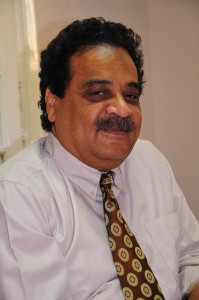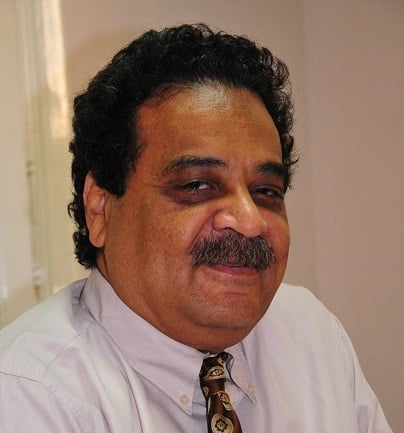
Coptic Christians have, since 1952, lived according to what might be considered a tacit agreement between the church and the state, one whereby the state committed itself to the protection of Copts, the principles and rules of equality before the law, and equal opportunity, and the church reciprocated by absorbing the activities of Coptic Christians within its walls. The state considered the confinement of Copts inside the church a way to distance these individuals from oppositional political activity, which the state had criminalised. Clergymen at the time welcomed the overwhelming presence of Copts inside their churches, and the phenomenon was linked to the general religious wave that took hold in both Egypt and the outside world beginning from the end of the 1960s and peaking in the mid-1980s.
This agreement proved successful throughout the Gamal Abdel Nasser era, even despite the traces of religion the leader often mixed into his nationalist speeches. Nasser’s use of religion was likely a result of his desire to distinguish himself from Soviet Union-style communism, which was then considered the top rival of Nasser’s nationalist socialism. Nasser’s speech was not considered as secular as Wafd’s, but it was nonetheless acceptable. Nasser’s use of religion increased as the state clashed with the Muslim Brotherhood and found it necessary to prove the superiority of its variant of Islam to public opinion. Thus, the government began to take a series of religious steps and measures, such as opening the Al-Azhar University to sciences other than religious ones, and expanding Azhari education. At the same time, restrictions began to be placed on Copts from assuming positions considered sensitive. This issue, which would become increasingly noticeable in later years, started during the Nasser era.
Sadat’s time in power, in light of his confrontation with Communists and Nasserists, began an alliance with political Islam. Sadat ascribed to himself the title, “the believer president,” and raised the banner of science and faith, declaring that he was a Muslim president for a Muslim state. These practices, which appeared to some as an attempt to build a religious state, discerned Copts. This prompted the church to enter into a confrontation with the state, and came just as the extremist group, Al-Jamaa Al-Islamiya – which enjoyed the sponsorship and protection of the state – began to stir up sectarian strife by offending Coptic beliefs and attacking their properties and churches.
Mubarak presented himself to Copts as the man who inherited – against his will and desire – the legacy of terrorism and extremism that threatened the Copts, and pledged to protect them from this threat in return for supporting him and joining his ranks. In light of the very real and escalating threat facing Copts, they lowered the ceiling of their demands. The state no longer vowed to keep religion out of education, the media or culture. And the top concern for Copts, as it was earlier in the Nasser and Sadat eras, was instead limited only to demanding protection from the state. This came after sectarian tensions had reached an unprecedented peak, with repeated attacks launched on their properties and churches. The attacks were not at the hands of extremist religious groups alone, but rather from a multitude of ordinary citizens, who were mobilised to sectarianism by both religious groups and the state over the course of many years.
In the last years of Mubarak’s rule, and with repeated attacks on the property of Copts and their churches, angry Coptic voices placed responsibility on the state, and some of these voices demanded – and in particular those who became known as the expatriate Copts – that Copts call for international protection. But the Church insisted that the state was innocent, and not complicit in any of the violence against Copts. The church also insisted that the state, represented by President Mubarak and the security services in particular, was the one protecting Copts from the dangers and risks they were being exposed to.
What unites these three stages of history, from 23 July 1952, and until 25 January 2011 is, simply put, Copts delegating to the church the management of their relationship with the state. What is also apparent is that the ceiling for Copts’ demands – and later for the church’s demands – from the state was lowered with the passage of time and growing sectarian tension. Finally, we should note that a large number of Copts were making serious accusations against the state during the final period. Some accused the state of involvement in violence against Copts in order to unsettle them, justify the continuation of their tacit agreement, and continue the security approach used to keep it in place; others charged that the orientation of the state and its practices were an indirect cause for the violence itself; still others claimed that the state was able to stop the violence but intentionally did not; finally, some argued that the state was unable to provide security and rein in violence. These angry Coptic voices did not merely whisper within the corridors of the church, but began to protest loudly, both inside and outside of the church.
In general, Coptic activism flourished in the late years of Mubarak’s rule and reached the point where many were demonstrating in the courtyards of cathedrals against the will of the church’s distinguished and beloved bishops. This Coptic movement coincided with the larger political movement taking hold of Egypt’s political scene at the time, but remained largely irrelevant with the possible exception of what took place following the Nag Hammadi crime. It was here that I observed the participation of a number of Coptic youths, well known for their protest activity inside the courtyard of the church and not permanently affiliated with any political or elitist group. The protest vigils, which were organised following the Nag Hammadi crime, came at the invitation of the National Council to Address Sectarian Violence, a council that emerged from Egyptians Against Discrimination, a group that tirelessly played a leading role on this issue and remained, even during the Nag Hammadi incident, moving about and working within elite circles. The group began, over time, achieving noteworthy success in pushing an increasing number of Copts to participate in activities, and this was perhaps the first step in rejuvenating the Coptic elite.
Overall, we can say that the state was choosing representatives for Copts, whether in parliament or for senior positions in the state, from among the sons of established Coptic families, through the consultation of the church, and perhaps even from those the church itself nominated. And of course it was assumed, or more precisely, required, that these chosen figures be loyal to the state, its party, president, and security apparatus as well! And over time, this organisation – which professionalised Coptic representation – became a narrowly interested, opportunistic and calcified group. And perhaps this was one of the main reasons for the growth in insurgent tendencies amongst Copts – and Coptic youth in particular – because Coptic representatives had, over time, become a group closed off from itself, and isolated from the mood of resentment and rebellion that had taken hold and spread among Copts during the final years of the President Mubarak era. These representatives became, in short, distorted faces that did not actually reflect the Copts. In other words, their authority had expired, just as the credibility and authority of the men of the Mubarak era, who were supposed to represent other groups and denominations, had expired as well.
Farid Zahran is a publisher and writer. He is the co-founder of the Egyptian Social Democratic Party.




